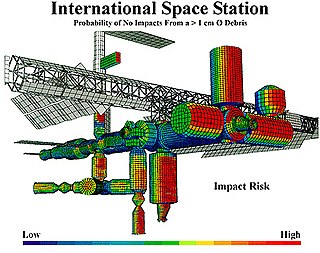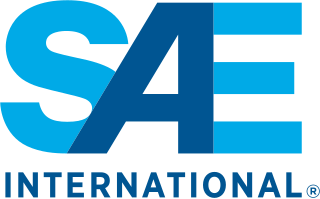Related Research Articles

Safety engineering is an engineering discipline which assures that engineered systems provide acceptable levels of safety. It is strongly related to industrial engineering/systems engineering, and the subset system safety engineering. Safety engineering assures that a life-critical system behaves as needed, even when components fail.

Fault tree analysis (FTA) is a type of failure analysis in which an undesired state of a system is examined. This analysis method is mainly used in safety engineering and reliability engineering to understand how systems can fail, to identify the best ways to reduce risk and to determine event rates of a safety accident or a particular system level (functional) failure. FTA is used in the aerospace, nuclear power, chemical and process, pharmaceutical, petrochemical and other high-hazard industries; but is also used in fields as diverse as risk factor identification relating to social service system failure. FTA is also used in software engineering for debugging purposes and is closely related to cause-elimination technique used to detect bugs.
Risk assessment determines possible mishaps, their likelihood and consequences, and the tolerances for such events. The results of this process may be expressed in a quantitative or qualitative fashion. Risk assessment is an inherent part of a broader risk management strategy to help reduce any potential risk-related consequences.

Occupational hygiene is the anticipation, recognition, evaluation, control, and confirmation (ARECC) of protection from risks associated with exposures to hazards in, or arising from, the workplace that may result in injury, illness, impairment, or affect the well-being of workers and members of the community. These hazards or stressors are typically divided into the categories biological, chemical, physical, ergonomic and psychosocial. The risk of a health effect from a given stressor is a function of the hazard multiplied by the exposure to the individual or group. For chemicals, the hazard can be understood by the dose response profile most often based on toxicological studies or models. Occupational hygienists work closely with toxicologists for understanding chemical hazards, physicists for physical hazards, and physicians and microbiologists for biological hazards. Environmental and occupational hygienists are considered experts in exposure science and exposure risk management. Depending on an individual's type of job, a hygienist will apply their exposure science expertise for the protection of workers, consumers and/or communities.
Process Safety Managementof Highly Hazardous Chemicals is a regulation promulgated by the U.S. Occupational Safety and Health Administration (OSHA). It defines and regulates a process safety management (PSM) program for plants using, storing, manufacturing, handling or carrying out on-site movement of hazardous materials above defined amount thresholds. Companies affected by the regulation usually build a compliant process safety management system and integrate it in their safety management system. Non-U.S. companies frequently choose on a voluntary basis to use the OSHA scheme in their business.

An environmental hazard is a substance, state or event which has the potential to threaten the surrounding natural environment or adversely affect people's health, including pollution and natural disasters such as storms and earthquakes. It can include any single or combination of toxic chemical, biological, or physical agents in the environment, resulting from human activities or natural processes, that may impact the health of exposed subjects, including pollutants such as heavy metals, pesticides, biological contaminants, toxic waste, industrial and home chemicals.
A hazard analysis is used as the first step in a process used to assess risk. The result of a hazard analysis is the identification of different types of hazards. A hazard is a potential condition and exists or not. It may, in single existence or in combination with other hazards and conditions, become an actual Functional Failure or Accident (Mishap). The way this exactly happens in one particular sequence is called a scenario. This scenario has a probability of occurrence. Often a system has many potential failure scenarios. It also is assigned a classification, based on the worst case severity of the end condition. Risk is the combination of probability and severity. Preliminary risk levels can be provided in the hazard analysis. The validation, more precise prediction (verification) and acceptance of risk is determined in the risk assessment (analysis). The main goal of both is to provide the best selection of means of controlling or eliminating the risk. The term is used in several engineering specialties, including avionics, food safety, occupational safety and health, process safety, reliability engineering.

ARP4761, Guidelines and Methods for Conducting the Safety Assessment Process on Civil Airborne Systems and Equipment is an Aerospace Recommended Practice from SAE International. In conjunction with ARP4754, ARP4761 is used to demonstrate compliance with 14 CFR 25.1309 in the U.S. Federal Aviation Administration (FAA) airworthiness regulations for transport category aircraft, and also harmonized international airworthiness regulations such as European Aviation Safety Agency (EASA) CS–25.1309.
A job safety analysis (JSA) is a procedure which helps integrate accepted safety and health principles and practices into a particular task or job operation. In a JSA, each basic step of the job is to identify potential hazards and to recommend the safest way to do the job. Other terms used to describe this procedure are job hazard analysis (JHA), hazardous task analysis (HTA) and job hazard breakdown.
Process safety is an interdisciplinary engineering domain focusing on the study, prevention, and management of large-scale fires, explosions and chemical accidents in process plants or other facilities dealing with hazardous materials, such as refineries and oil and gas production installations. Thus, process safety is generally concerned with the prevention of, control of, mitigation of and recovery from unintentional hazardous materials releases that can have a serious effect to people, plant and/or the environment.
Control banding is a qualitative or semi-quantitative risk assessment and management approach to promoting occupational health and safety. It is intended to minimize worker exposures to hazardous chemicals and other risk factors in the workplace and to help small businesses by providing an easy-to-understand, practical approach to controlling hazardous exposures at work.
Workplace health surveillance or occupational health surveillance (U.S.) is the ongoing systematic collection, analysis, and dissemination of exposure and health data on groups of workers. The Joint ILO/WHO Committee on Occupational Health at its 12th Session in 1995 defined an occupational health surveillance system as "a system which includes a functional capacity for data collection, analysis and dissemination linked to occupational health programmes".
Quantitative risk assessment (QRA) software and methodologies give quantitative estimates of risks, given the parameters defining them. They are used in the financial sector, the chemical process industry, and other areas.

In simple terms, risk is the possibility of something bad happening. Risk involves uncertainty about the effects/implications of an activity with respect to something that humans value, often focusing on negative, undesirable consequences. Many different definitions have been proposed. The international standard definition of risk for common understanding in different applications is "effect of uncertainty on objectives".
A food safety-risk analysis is essential not only to produce or manufacture high quality goods and products to ensure safety and protect public health, but also to comply with international and national standards and market regulations. With risk analyses food safety systems can be strengthened and food-borne illnesses can be reduced. Food safety risk analyses focus on major safety concerns in manufacturing premises—not every safety issue requires a formal risk analysis. Sometimes, especially for complex or controversial analyses, regular staff is supported by independent consultants.
Automotive Safety Integrity Level (ASIL) is a risk classification scheme defined by the ISO 26262 - Functional Safety for Road Vehicles standard. This is an adaptation of the Safety Integrity Level (SIL) used in IEC 61508 for the automotive industry. This classification helps defining the safety requirements necessary to be in line with the ISO 26262 standard. The ASIL is established by performing a risk analysis of a potential hazard by looking at the Severity, Exposure and Controllability of the vehicle operating scenario. The safety goal for that hazard in turn carries the ASIL requirements.

A cyber PHA is a safety-oriented methodology to conduct a cybersecurity risk assessment for an Industrial Control System (ICS) or Safety Instrumented System (SIS). It is a systematic, consequence-driven approach that is based upon industry standards such as ISA 62443-3-2, ISA TR84.00.09, ISO/IEC 27005:2018, ISO 31000:2009 and NIST Special Publication (SP) 800-39.
A bow-tie diagram is a graphic tool used to describe an accidental event in terms of its initial causes, ultimate negative consequences, and safety barriers designed to prevent or control the associated hazards. It can be considered as a simplified, linear representation of a fault tree combined with an event tree, although it can maintain the quantitative, probabilistic aspects of the fault and event tree when it is used in the context of quantified risk assessments. The diagram visualizes an unintended event, usually one with the potential to escalate to undesired consequences, with all its credible initiating causes on the left of the event and its ultimate outcomes on the right. A number of barriers, either hard/engineered or administrative/procedural, are placed on the path from the initiators to the final outcomes. The shape of the diagram recalls that of a bow tie, after which it is named.
Process safety management (PSM) is a practice to manage business operations critical to process safety. It can be implemented using the established OSHA scheme or others made available by the EPA, AIChE's Center for Chemical Process Safety, or the Energy Institute.
A Layers of protection analysis (LOPA) is a technique for evaluating the hazards, risks and layers of protection associated with a system, such as a chemical process plant. In terms of complexity and rigour LOPA lies between qualitative techniques such as Hazard and Operability studies (HAZOP) and quantitative techniques such as fault trees and event trees. LOPA is used to identify scenarios that present the greatest risk and assists in considering how that risk could be reduced.
References
- 1 2 "Code of Federal Regulations, Title 29, Subtitle B, Chapter XVII, Part 1910, Subpart H § 1910.119". eCFR. 2023-06-15. Retrieved 2023-06-20.